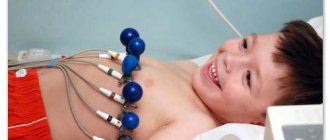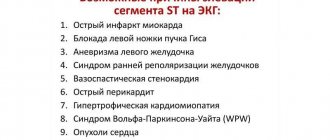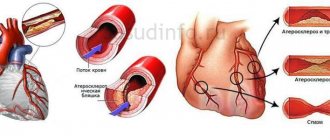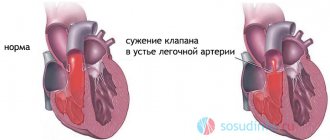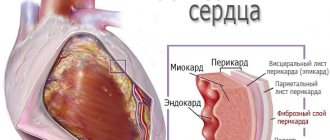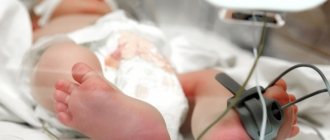Hemorrhagic diathesis is a generalized name for a group of syndromes that are characterized by an increased tendency to bleed. The body reacts inadequately to physical, mechanical and other stimuli, responding with the destruction of blood vessels and the outpouring of liquid connective tissue.
Moreover, there are more than 300 forms of the pathological process. For obvious reasons, it is almost never possible to quickly discover the essence of the disorder.
Time works against the patient. As the deviation progresses, it becomes more difficult to control. It is necessary to contact a hematologist as soon as possible.
Development mechanism
The pathogenesis of the disorder is based on a group of factors. There are three main ways in total:
Impaired functional activity of platelets
The classic situation is thrombocytopathy, when there are enough formed cells, but they are not able to work adequately and perform their own functions of aggregation (collection in large numbers) and restoration of vascular elasticity. Ultimately, this leads to increased bleeding.
Another subtype concerns insufficient platelet concentration and is called thrombocytopenia.
Both options are equally dangerous and affect the body’s ability to synthesize or ensure normal activity of formed cells.
Coagulation problems
The essence is a disruption in the production of special substances called coagulation factors. There are many options in this case, because there are many connections themselves.
Objectively, this mechanism manifests itself as DIC syndrome, hemophilia and many other abnormal conditions.
It is often not possible to qualitatively treat such deviations, since the etiology itself does not imply correction. Often these disorders are of genetic origin. All that remains is to relieve the symptoms.
Changes in the properties of blood vessels
They are not elastic enough, brittle, excessively permeable, which ultimately becomes the cause of the problem.
Structural disorders can be caused by transient pathologies, for example, scurvy, when the body does not receive ascorbic acid, vasculitis of autoimmune or infectious origin.
In this case, treatment is possible, although it presents certain difficulties.
Hemorrhagic diathesis, regardless of the primary mechanism, further develops according to the same pattern:
- Bleeding begins, then, as the underlying disorder progresses, its intensity increases.
- Then additional symptoms appear. The clinical picture gradually becomes pronounced.
- As a result, a phase of potentially fatal complications begins. The percentage probability of negative consequences increases in proportion to the years without treatment.
These are not conditions that can go away on their own. Time plays a key role in such a case; it is necessary to start specific therapy as early as possible.
Complications
- The most common complication of the disease is iron deficiency anemia. With frequent and heavy blood loss, it is not possible to restore hemoglobin naturally; transfusions or special iron supplements are necessary.
- With repeated hemorrhages into the joint capsule, joint stiffness occurs.
- Compression of nerve trunks by hematomas leads to the formation of paresis and paralysis.
- The most dangerous complication is hemorrhage in the brain and adrenal glands.
The treatment itself can also be a source of complications: with transfusion there is a risk of contracting HIV infection and hepatitis.
Classification
The division is carried out in several ways. The generally accepted criterion is the origin and type of deviation. Accordingly, there are three major subtypes of the disorder.
- Disturbances in the normal concentration or functional activity of formed cells. Thrombocytopathy or -penia. They have already been mentioned above. Both options are deadly without therapy, fraught with fatal bleeding even with minimal physical stimulation of tissue.
Moreover, the patient often falls into a trap. It is impossible to perform an operation; surgical intervention becomes an unattainable method of correction if necessary. Because the patient simply cannot stand the procedure.
Therapy is not always possible, but complete recovery can be achieved in approximately 25-30% of cases.
- Coagulopathies. As the name suggests, these are disorders in the normal coagulation stage. Accompanied by a decrease in the production of certain specific substances or a whole group of them.
They are represented by a wide list: DIC syndrome, hemophilia, von Willebrand disease and many others. Differentiation of these conditions is carried out using diagnostic methods.
- The third category of disorders concerns blood vessels. These are so-called vasopathy. These include predominantly autoimmune and less commonly infectious vasculitis.
Inflammatory processes on the part of capillaries, veins, arteries and other structures. Another classic example of a pathology of this kind is considered to be Scurvy, a lack of ascorbic acid in the body.
Despite the fact that this is the main method of classification, it is far from the only one. Disorders can be divided according to etiology and origin.
- Primary type. Caused by the actual disorder of platelet function. The prevalence among the population of the entire planet is, according to various estimates, about 0.07% of the total population of people, which is not so much and equals approximately 5 million.
At the same time, the figure may be underestimated due to the insufficient level of medicine, and not everyone goes to doctors.
- Secondary form. Coagulo- and vasopathies belong to this type. They are accompanied by the same symptoms, but the origin is different, and therefore the approach to therapy will be different.
Acute and chronic disorders are also distinguished. Depending on the age of manifestation (onset of the disorder), hemorrhagic diathesis is called in children and in adult patients.
Classifications make it possible to more accurately understand the essence of the disorder and carefully describe it in medical documentation. Work out diagnostic tactics and then therapy.
Which doctor treats hemorrhagic diathesis?
Almost always, diseases of this group are accompanied by skin rashes. This is what makes people turn to dermatologists. After examining the patient, to clarify the diagnosis, the doctor recommends undergoing a full examination and consulting a therapist or pediatrician.
Once the diagnosis is confirmed, further treatment is prescribed by a hematologist. Together with him, other specialists also participate in determining the medical strategy, depending on the underlying disease causing increased bleeding.
Symptoms
The division of clinical aspects is carried out according to the form of the main pathological process.
The condition in question is heterogeneous and is characterized by a group of heterogeneous syndromes. Each with its own set of manifestations.
Purpura
The main symptom is the formation on the skin of the torso, arms, and legs of small reddish spots of varying color intensity: from soft pink to bright, crimson, scarlet (see photo).
They are painless and do not cause any discomfort, except psychological due to a cosmetic defect.
After a few weeks they go away on their own. However, areas of strong pigmentation remain and cannot be eliminated without special procedures.
Microangiomatous form
The characteristic clinical feature is focal bleeding. To put it simply, effusions of liquid connective tissue are observed regularly and in the same places.
Localization may be the eye, nasal passages, mucous membranes of the genital organs, digestive tract, lungs. In theory, anything.
Depends on the characteristics of the patient’s body and the origin of the pathological process.
Circulatory form of diathesis
A more variable variety. Because it is already accompanied by a group of typical manifestations. The main triad can be called:
- The formation of bruises and small hematomas on the skin of the body, which are in no way connected even with a physical effect on the tissues of the body. These are spontaneous violations.
- Petechial rash. As in the case of purpura, but less intense. Passes without any marks or cosmetic defects. It also does not cause any discomfort to the patient.
- Gradually more intense bleeding occurs. The digestive tract, the reproductive tract in women, and the respiratory system are also involved. It is possible to develop a stroke or heart attack for the same reasons.
Hematoma form
An extremely dangerous type of hemorrhagic rash. It poses a great threat to life. Since it is characterized by a massive outflow of liquid tissue into the subcutaneous fat, hollow organs, possibly into the joints.
Attention:
Each episode of the disorder could be the last. This syndrome mainly occurs in hemophilia or anticoagulant abuse.
Mixed type
It is characterized by the development of several symptoms. Including a combination of intense bleeding and petechial rash on the skin.
Symptoms that occur in all types of disorders
Despite the specificity of individual types of disorders, there are also manifestations common to all types.
- Falling blood pressure levels. The degree of this depends on the nature of the deviation, how long it has existed, and the amount of blood lost. Critical changes are possible, including collapse, falling into a coma and rapid death from complications.
- Decreased heart rate. Bradycardia. However, at the initial stages of the pathological process, the opposite phenomenon also occurs - tachycardia up to 100-110 beats per minute. This is how the body tries to compensate for the lack of nutrition and cellular metabolism.
- Respiratory dysfunction. Even without physical activity.
- In the medium term, iron deficiency anemia cannot be avoided. This condition is accompanied by weakness, drowsiness, nausea, neurological disorders, cosmetic defects (brittle hair, acne) and a group of other manifestations.
The symptoms of hemorrhagic diathesis are specific, but there may be certain difficulties in differentiating individual conditions. The issue is resolved through laboratory and instrumental diagnostics.
Causes
In most cases, the violation of the type in question is of secondary origin. That is, it is due to other deviations in the functioning of the body.
What development factors are present:
- Genetic abnormalities. The modified material is passed on to children who experience disorders at birth. However, the manifestation may be late. In some situations, deviations are observed during puberty.
- Vasculitis. Inflammatory processes from vessels of different sizes and unequal localization. As a rule, they occur as a result of an attack by the body’s own defenses on cells.
The autoimmune process is not the only one possible. There are also infectious agents. For example, against the background of damage by staphylococcus, pyogenic flora in general, herpes viruses, especially the fourth type strain, etc.
Examination of patients is required to distinguish between different forms and disorders.
- Infectious diseases. Different localization and intensity.
- All kinds of disturbances in the synthesis of coagulation factors. Hemophilia, disseminated intravascular coagulation syndrome and a large group of other changes.
- Hormonal imbalance. It also occurs as a natural process. For example, against the background of puberty, pregnancy, and the transition to menopause in men and women.
It could also be a group of reasons. Therefore, the question of origin is not always so obvious and simple. The doctor is required to have sufficient insight in matters of clinical practice.
Diagnostics
The examination is carried out under the supervision of a hematology specialist. The duration of the activities can be significant. Sometimes more than one cycle of procedures is required.
What is included in the basic list of actions:
- Questioning the patient. The doctor records all complaints, puts them together and compiles a picture. By comparison, it identifies the most likely disorders and eliminates them one by one gradually.
- Anamnesis collection. Plays a big role. Previous and current illnesses, habits, lifestyle, and family history are identified. This simple method allows you to quickly determine the likely etiology of the disorder.
- General blood analysis. Basic procedure. Aimed at studying the most severe disorders in the functioning of the body.
- Visual assessment of patient tissue. Petechial rash and purpura become visible immediately.
- Functional tests. Provoking the formation of hemorrhages. Using a tourniquet, pinch and other ways. The nature of the deviation is determined by the degree of tissue reaction.
- Urine examination. As a rule, doctors are interested in blood impurities. Hematuria. It is possible to expand the event and prescribe analysis according to Nechiporenko.
- Assessment of the presence of occult blood in stool. Almost always, its presence and a positive result indicate a cancerous process or, more likely in this case, minor bleeding in the lower parts of the digestive tract.
- Coagulogram. Study of the speed and quality of blood clotting. Differences from the norm are immediately identified as pathological.
- If necessary, an ultrasound scan of the gastrointestinal tract and abdominal cavity in general is prescribed. Radiography. MRI or CT.
The question of the appropriateness of a particular event is decided by a specialist. Diagnostics may require more than one week of close work between the doctor and the patient in tandem.
Therapy methods
Treatment of hemorrhagic diathesis in the acute phase takes place in a hospital, and the choice of methods depends on the primary cause of the pathological process.
If we talk about specific examples:
- Active use of thrombolytics and anticoagulants requires avoidance of this type of medication. This is an effective method of correction, but it must be done under the supervision of a doctor. Because paradoxical reactions are possible when abruptly stopping medications.
- Vikasol and names based on aminocaproic acid are used as a hemostatic agent. As a rule, locally.
- For thrombocytopathies and some other changes, glucocorticoids work well. Dexamethasone, Prednisolone. In the form of tablets or injection solutions. Long-term use of these, however, poses a health hazard itself. Because these drugs often cause serious side effects.
- Autoimmune processes require the use of immunosuppressants, which will slow down or completely eliminate the abnormal response of the body's own defenses.
Hemostasis (stopping bleeding) is indicated as a symptomatic measure; in case of internal localization, surgical methods are used.
In addition, the use of vitamin-mineral complexes based on ascorbic acid and other compounds.
You cannot do without blood, plasma, and red blood cell transfusions. This is the main method of systematic therapy for hemophilia.
Patients are advised to reconsider their lifestyle. Minimize the risk of injury, even minor ones. Stop smoking and drinking alcohol. Do not consume medications unless prescribed by a specialist. These are reasonable preventive measures.
Treatment
Hemorrhagic diathesis requires complex treatment taking into account the cause of the pathology. Therapy includes medications to improve blood clotting and prevent the development of iron deficiency anemia. Urgent measures may be required to stop bleeding. In some cases, surgical interventions and replacement therapy are prescribed.
First aid
Correctly provided first aid can reduce the harm from this hemostasis disorder. If a rash appears as a result of rupture of small capillaries, a heating pad filled with ice should be applied to the damaged area.
If the skin is damaged, a rubber tourniquet or tight bandage can be used to stop bleeding in patients with clotting problems. In addition, the use of a special sponge is recommended. In case of intense nosebleeds, the nasal cavities must be filled with cotton or gauze swabs.
Medicines
Drugs for diathesis are selected individually. Medications containing artificial clotting factors are often prescribed. Such drugs include:
- Thrombin.
- Gluconate.
- Pahikarpin.
- Calcium hydrochloride.
Glucocorticoids are often introduced into the treatment regimen. Commonly used medications in this group include:
- Prednisolone.
- Hydrocortisone.
- Dexamethasone.
- Prednisone, etc.
Important information: What is hypoxia during pregnancy: signs and how to treat
Additionally, vitamin and mineral complexes can be prescribed to reduce the severity of iron deficiency anemia.
Surgery
For a number of pathologies, splenectomy, i.e., removal of the spleen, can increase the length and quality of life of people suffering from diseases. In this organ, leukocytes with an altered structure can accumulate in large quantities. In addition, operations to remove or replace a damaged vessel may be indicated. Procedures are often performed to puncture an overfilled vessel and pump out blood. As hemarthrosis progresses, joint replacement may be indicated.
Physiotherapy
Physiotherapy procedures are selected taking into account the cause of the pathology. If hemorrhagic diathesis develops against the background of autoimmune processes, plasmapheresis procedures may be required. For hemorrhages in the joint cavities, after immobilization and drug treatment, patients are prescribed medicinal baths and light massage.
Blood transfusion
For congenital pathologies accompanied by diathesis, blood transfusion procedures can achieve good results. Plasma transfusions may be indicated, since this blood component contains all the necessary clotting factors. Platelet transfusion procedures are often prescribed. In severe cases, when the patient experiences an anemic coma, a transfusion of red blood cells may be prescribed.
Physiotherapy
Intense physical activity is contraindicated for patients suffering from diathesis, but physical inactivity worsens the condition of blood vessels. With diathesis, patients need to perform a gentle complex of exercise therapy. First, the exercises must be learned under the supervision of an instructor, but later the patient can perform them at home.
Nursing care
In this pathological condition, nursing care consists of carrying out the doctor’s orders. Junior medical staff carries out hygienic and therapeutic measures, collects material for further research and monitors the paperwork. Nursing care is required for patients before and after blood transfusion.
Forecast
Depends on the specific diagnosis. For many disorders - unfavorable. If it is possible to take control of the disease or correct the symptoms to zero, the prospects for recovery are good.
The issue is resolved after at least basic diagnostics. You need to check your prognosis with your doctor.
Possible complications
The main negative consequences are represented by a dangerous group of processes.
- These include stroke, heart attack, massive bleeding, most of which are fatal, as well as anemia with a critical drop in hemoglobin levels.
- All kinds of disorders of the cardiovascular system, brain, neurological deficit.
Hemorrhagic diathesis is a group of syndromes. As a rule, we are not talking about a diagnosis, but about a disorder at the symptomatic level.
For what reasons it develops - you need to find out under the supervision of a hematology specialist. It is possible to involve a vascular surgeon and other doctors, if there are grounds for this.
With proper attention and timely therapy, it is possible to improve the quality of life, minimize risks and maintain health.
Disease prevention
If we are talking about a hereditary disease, then no preventive measures will help. The only way to prevent the occurrence of such a disease in children is to plan pregnancy taking into account the heredity of both spouses.
However, hemorrhagic diathesis can also be acquired. In this state of affairs, preventive measures turn out to be quite effective.
- Standard examples of general strengthening of the body have a remarkable effect on the condition of blood vessels. Strong sports activities, physical exercise, good nutrition, hardening - from rubdowns to cold baths, all this has a great effect on hemodynamics.
- Taking vitamins – in this case, vitamin C and K are most important.
- Maintaining hygiene - with any form of hemorrhagic diathesis, the risk of contracting infectious diseases significantly increases. Following hygiene rules prevents the development of infection.
- Treatment of inflammatory diseases - foci of inflammation are constant sources of toxins that sooner or later destroy the immune system.
- Limiting time spent in the sun - the skin with this disease is very sensitive to ultraviolet radiation, easily burns, which provokes hemorrhages.
